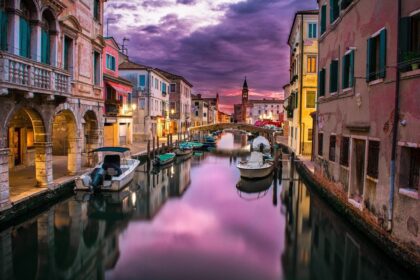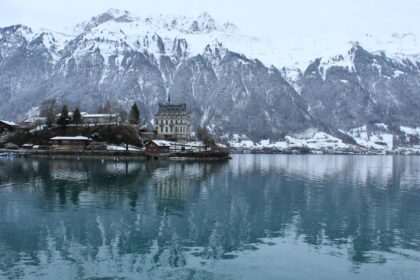When planning a vacation or exploring a new destination, one of the first things that comes to mind is the tourist attractions you can visit. Tourist attractions are places or sites that draw visitors due to their cultural, historical, natural, or entertainment value. These attractions play a pivotal role in attracting tourists worldwide and contribute significantly to local economies.
In this article, we will explore the top 10 types of tourist attractions that you should consider including in your travel itinerary. Each type offers unique experiences and insights into different aspects of our world, from iconic landmarks and natural wonders to theme parks and museums.
1. Iconic Landmarks
Iconic Landmarks are perhaps some of the most well-known tourist attractions globally. They represent a country or city’s identity and are significant symbols recognized worldwide. These landmarks become focal points for travellers seeking memorable photo opportunities or a chance to connect with history.
The Eiffel Tower – Paris, France
One such iconic landmark is The Eiffel Tower in Paris, France. Standing at an impressive height of 330 meters (1080 ft), this wrought-iron lattice tower attracts millions of visitors annually. The observation decks offer breathtaking views of the French capital’s skyline and have become synonymous with romantic moments captured by tourists from around the globe.
The Great Pyramids – Giza Plateau, Egypt
Another famous example is The Great Pyramids on the Giza Plateau near Cairo, Egypt. This ancient wonder remains an enigma for historians and archeologists alike while continuing to captivate travellers with its towering presence as it has for thousands of years.
2. Natural Wonders
Nature has provided us with awe-inspiring landscapes that leave us marvelling at their grandeur and beauty. Natural wonders offer visitors an opportunity to immerse themselves in the breathtaking landscapes and experience the raw power of nature.
The Grand Canyon – Arizona, United States
The Grand Canyon in Arizona, United States, is a prime example of a natural wonder. Carved by the Colorado River over millions of years, this immense gorge stretches approximately 277 miles (446 km) long and up to 18 miles (29 km) wide. Hiking trails allow visitors to explore different canyon sections and witness its ever-changing colours as the sun casts shadows throughout the day.
Victoria Falls – Zimbabwe/Zambia Border
Victoria Falls is one of Africa’s most famous natural attractions located on the border between Zimbabwe and Zambia. They are known locally as “Mosi-oa-Tunya” or “The Smoke That Thunders,” this waterfall measures an astonishing 355 feet (108 meters) in height and spans more than a mile (1.7 km) across. The sheer force and beauty of Victoria Falls make it a must-visit destination for nature enthusiasts.
3. Historic Sites
For those interested in history, visiting historic sites provides an opportunity to step back in time and gain insights into ancient civilizations, significant events, or milestones that shaped our world.
Machu Picchu – Cusco Region, Peru
One such historic site is Machu Picchu, located high in Peru’s Andes Mountains above the Sacred Valley near Cusco. Built by the Incas around AD 1450 but abandoned during Spanish colonization, this mystical city showcases impressive stone architecture that has stood the test of time. Exploring Machu Picchu’s terraces and buildings allows visitors to appreciate Inca ingenuity while admiring breathtaking mountain views.
Petra – Ma’an Governorate Jordan
Hidden amidst rugged desert canyons lay Petra, an ancient city carved into pink sandstone cliffs within present-day Jordan. Dating back to 300 BCE, this UNESCO World Heritage Site features stunning ruins, including the iconic Treasury and Monastery. Walking through the narrow canyon known as the Siq and witnessing these ancient wonders leaves visitors in awe of Petra’s rich history.
4. Museums and Galleries
Museums and galleries explore art, culture, science, and history. These institutions house collections of artifacts, artwork, scientific exhibits or historical documents that aim to educate and inspire visitors.
The Louvre – Paris, France
The Louvre Museum in Paris, France, is one of the world’s largest art museums. Housed within a former royal palace spanning over 600 years of history, it displays iconic masterpieces such as Leonardo da Vinci’s Mona Lisa and Venus de Milo. Visiting The Louvre allows art enthusiasts to immerse themselves in some of humanity’s most outstanding achievements.
Smithsonian Institution – Washington D.C., United States
The Smithsonian Institution is a collection of museums in Washington, D.C., USA. Comprised of 19 museums ranging from natural history to space exploration to African American history, each museum aims to preserve our heritage while enlightening visitors about various fields of knowledge. The Smithsonian offers an unparalleled learning experience for individuals with diverse interests.
5. Theme Parks
Theme parks are designed with entertainment at their core, offering thrilling rides, attractions for all ages and immersive experiences that transport visitors into different worlds.
Disneyland – Anaheim, California
Founded by Walt Disney himself in 1955, Disneyland remains one of the most famous theme parks globally, in Anaheim, California, USA. With its enchanting castles, intertwining pathways, and famous characters such as Mickey Mouse, this magical kingdom still captures the hearts (and wallets) of families looking to share new memories.
Universal Studios Hollywood – Los Angeles, United States
Another renowned theme park is Universal Studios Hollywood, located in Los Angeles, California. It offers visitors the opportunity to enter the world of movies and television with behind-the-scenes tours, thrilling rides styled after blockbuster films such as Jurassic World and Harry Potter, and live entertainment options that keep guests entertained throughout their visit.
6. Cultural Neighborhoods
Exploring cultural neighbourhoods allows one to immerse oneself in local traditions, architecture, cuisine, and community. These neighbourhoods often offer unique experiences through events or authentic shops where you can purchase locally made crafts or taste traditional dishes.
The Medina of Marrakech – Morocco
The Medina of Marrakech in Morocco is a UNESCO World Heritage Site renowned for its vibrant atmosphere and rich heritage. Visitors can wander through labyrinthine streets with colourful souks selling spices, textiles, and handicrafts. The mesmerizing beauty of riads (traditional Moroccan houses) exemplifies the city’s architectural splendour.
Gamla Stan – Stockholm, Sweden
In the heart of Stockholm lies Gamla Stan, also known as “The Old Town.” This well-preserved medieval neighbourhood offers visitors a glimpse into Sweden’s history with its narrow cobblestone streets, charming cafes, and historic buildings like the Royal Palace. A stroll through Gamla Stan feels like stepping back in time.
7. Adventure Destinations
For adrenaline junkies seeking an action-packed vacation,
Queenstown – New Zealand
Queenstown, in New Zealand, is renowned for offering an array of thrilling activities—from bungee jumping to jet boating to skydiving. Nestled between mountains and surrounded by crystal-clear lakes, this picturesque destination serves up exhilaration alongside spectacular natural scenery that appeals to adventure seekers around the globe.
Kruger National Park – South Africa
If wildlife encounters are your idea of adventure, then Kruger National Park should be on your must-visit list. As South Africa’s largest game reserve, it is home to the Big Five (elephant, lion, leopard, rhino and buffalo ) and many other wildlife species. Exploring the park’s vast landscapes on a safari allows one to witness these majestic creatures in their natural habitat.
8. Architectural Marvels
Architecture enthusiasts will be captivated by magnificent architectural marvels showcasing human imagination and ingenuity.
Taj Mahal – Agra, India
The Taj Mahal in Agra, India, is an exquisite example of Mughal architecture renowned for its white marble facade and intricate carvings. Considered one of the New Seven Wonders of the World, this mausoleum was built by Emperor Shah Jahan in memory of his late wife. The Taj Mahal’s beauty at sunrise or sunset is breathtaking.
Sydney Opera House – Sydney, Australia
Designed by Danish architect Jørn Utzon, Sydney Opera House is an iconic symbol for Sydney and Australia. Its distinctive sail-like roof structure overlooks Sydney Harbour, hosting some of the world’s most acclaimed performances. The complex also houses bars, restaurants, and shops where visitors can enjoy stunning views or explore Australian cultural experiences.
9. Religious Sites
Throughout history, religion has significantly influenced art, architecture, and culture. Religious sites hold spiritual significance for many individuals while offering architectural beauty worth admiring regardless of faith.
Angkor Wat – Siem Reap, Cambodia
In Siem Reap, Cambodia, Angkor Wat is not only the largest religious monument globally but also a UNESCO World Heritage Site. This sprawling temple complex serves as a place of worship and an artistic masterpiece reflecting the Khmer Empire’s achievements between the 9th-15th centuries. Encapsulating intricate carvings towers that rise skyward and a sense of serenity, Angkor Wat simultaneously fascinates both historians and tourists alike.
Vatican City – Rome, Italy
Located within the heart of Rome, Vatican City is an independent city-state known for being the spiritual epicentre of Catholicism. Visitors can marvel at architectural wonders like St.Peter’s Basilica and Michelangelo’s frescoes in the Sistine Chapel. Exploring Vatican City often includes admiring priceless masterpieces in the Vatican Museums while experiencing a deep spiritual awe.
10. Scenic Routes
Sometimes, the journey itself is as important as reaching a destination. Scenic routes provide travelers with breathtaking landscapes, helping them connect with nature while driving, cycling or hiking.
Pacific Coast Highway – California, United States
The Pacific Coast Highway, also known as Highway 1, stretches along California’s coastline, offering stunning ocean views, spectacular cliff drops, and charming coastal towns such as Monterey and Santa Barbara. Explore hidden beach coves, breathe in fresh sea air, and enjoy mesmerizing sunsets during one of world’s most scenic drives.
The Great Ocean Road – Victoria, Australia
Spanning approximately 243 kilometres (151 miles) between Torquay and Allansford, The Great Ocean Road provides travellers with magnificent coastal scenery in Australia. An array of cliffs, windswept beaches, and iconic limestone formations like Twelve Apostles make this road trip adventure genuinely unforgettable.
Conclusion
Visiting tourist attractions worldwide allows us to discover new cultures, appreciate nature’s beauty, unravel history’s mysteries, or create lasting memories filled with laughter and joy. Whether you are seeking adventure, cultural experiences, historical insights or serene moments reconnecting with Mother Nature, It is essential to select destinations that align with your interests and preferences. Utilizing planning tools and resources available online can help shape your itinerary, guaranteeing an unforgettable travel experience.













